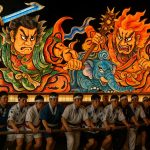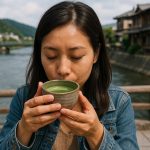Introduction to Sumo Wrestling
Sumo wrestling is a traditional Japanese sport with a rich historical significance. Its importance in Japanese culture is profound, acting as both a competitive sport and a cultural observance filled with ancient customs. It is a full-contact sport where two powerful combatants, known as rikishi or sumo wrestlers, engage in a contest within a circular ring, called a dohyo. The primary aim during a match is to compel the adversary to step outside the ring or cause them to touch the ground with any part of their body apart from the soles of their feet. Such a sport requires not only physical strength and technique but also an understanding of its ceremonial roots, making sumo a revered tradition in Japan.
The Sumo Wrestling Tournament Experience
A visit to a sumo wrestling tournament is more than witnessing a sporting event; it is an immersion into Japanese heritage. Each tournament, known locally as basho, offers a spectacle steeped in tradition and ceremony. Held six times annually, these tournaments are highly anticipated and attract vast numbers of spectators from both Japan and abroad. They span a period of 15 days, during which attendees can experience the focus, strategy, and raw power of the rikishi as they strive for victory.
The Venue
Sumo tournaments take place in some of Japan’s most prominent sports stadiums. Among these, the Ryogoku Kokugikan in Tokyo holds a particularly iconic status. Recognized globally as the heart of sumo wrestling, this stadium provides a vibrant and electric environment ideal for experiencing the thrill of the sport. Its architectural design incorporates traditional Japanese elements, fostering an atmosphere steeped in cultural reverence. Seating arrangements cater to diverse preferences, offering both closer ring-side seats that bring spectators into the heart of the action, as well as balcony seating for a broader perspective.
The Rituals and Traditions
Sumo wrestling is inextricably linked with Shinto rituals, marking it as not just a sport but a cultural rite. Before each bout starts, wrestlers partake in a series of ceremonial gestures. These include hand-clapping, feet stamping, and salt throwing, each act serving to purify the ring and invoke good luck. The matches themselves are prefaced by the shikiri-naoshi, a meaningful ritual where wrestlers face each other, exercising mental discipline and anticipation. Such rituals highlight the spiritual aspect of sumo, connecting what occurs in the ring with broader historical and spiritual narratives in Japanese culture.
The Wrestlers
Sumo wrestlers are categorized into a hierarchy of ranks. At the pinnacle stands the yokozuna, a title representing the highest degree of achievement and honor. The hierarchy descends through various ranks down to the jonokuchi, the lowest tier. Wrestlers dedicate their lives to mastering the sport, a commitment that encompasses both physical and mental training. They reside in sumo beya—or stables—where every aspect of their lives, from diet to exercise, is rigorously managed to ensure they maintain the size, strength, and skills needed for competition. These athletes uphold a lifestyle defined by strict codes of behavior and intense dedication, honored in every match they compete in.
For fans and those looking to experience sumo in its full glory, detailed information regarding schedules, venues, and ticket reservations can be accessed through the official resources provided by the Japan Sumo Association. Their official website offers extensive details and services: Japan Sumo Association.













